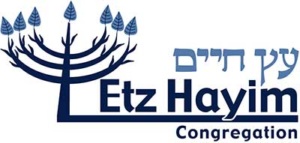This speech was delivered at Yom Kippur services on Saturday, September 30, 2017.
“Martyrology” by Alan Savada
Those of you who were here for the Rabbi’s sermon on the first day of Rosh Hashanah will be getting a small encore, as today I will be speaking a little about the Sephardi communities affected by the infamous inquisitions. Often referred to as the Spanish Inquisition, it may have commenced in that nation, but sadly spread to other countries and reach as far away as Mexico and South America, then under Spanish and Portuguese domination. Interestingly enough, while the formal Supreme Sacred Congregation of the Roman and Universal Inquisition technically ended in the 19th century, the institution still survives today as the Catholic Church’s Supreme Sacred Congregation of the Holy Office, renamed in 1965 to defend the church from heresy, headed today, oddly enough, by a Spanish archbishop!
Anti-Judaic violence began in Spain as early as 1391, when pogroms there resulted in mass conversions of thousands of Jews fearing for their lives. The Spanish Inquisition formally began almost 100 years later in 1478, and extended to the entire Spanish empire then including the Netherlands, the Kingdom of Naples and of course, the possessions in the New World. The original goal was to target those who had converted, but were still adhering to their old religions. It was not until 1492 that all Jews were forcibly expelled from Spain and its colonies.
This expulsion caused a migration of over 90,000 souls into nearby Portugal, whose first king incidentally had a Jewish minister in his court some years earlier. King Manuel at first welcomed the Jewish exiles, but in subsequently choosing to marry the Infanta of Spain, the so-called enlightened Dom Manuel, agreed in his marriage contract to commence persecutions of those he had invited to cross the border.
In December 1496, all Jews had a choice of conversion or exile; they could not, however, take their children or belongings if they chose the latter.
The fate of the Portuguese Jews became the same as their Spanish brethren with forced conversion in 1497, although the inquisition was not formally installed there until 1536 – and was only abolished in 1821.
Last week you heard about the Lisbon Pogrom, or Massacre of Easter 1506, when on April 19, a New Christian, who had converted from Judaism, simply disagreed with a supposed vision by a Dominican friar, which the latter insisted was a presage to the end of the plague and drought. The soul who disagreed was immediately beaten to death by the crowd as a heretic and burnt in the large public Rossio square outside.
The Dominican friars absolved those present of any sins they might choose to commit, and the mob, also joined by Dutch and German sailors, proceeded to murder over 500 New Christians.
King Manuel had taken leave of the plague-ridden capital and ultimately sent magistrates to hopefully ameliorate the situation, but the mobs had grown and violence spread so fast, nothing could be done.
The next day, all the converted Jews hid in their homes to avoid the conflict, but were pulled from their houses, many being burnt alive. Firsthand accounts tell us of infants having their limbs torn off and the day ending with over 1000 murders, not to mention the massive looting.
Tuesday brought members of the King’s court to the capital after the news reached him that his squire, a converted Jew, had also been killed. The Royal Guards were called to quell the rioters and murderers, but it was too later for the 1900 that had been killed.
Is it a comfort to know that many of the antagonists were arrested and hanged, and the Dominican friars that instigated the crowd were stripped of their religious orders and burnt at the stake?
I now divert to another part of the Spanish realm at that time, where we visited this summer. As early as the 1st Century of the Common Era, it is known that Jews lived on the island of Sicily. We were able to visit a mikveh in Siracusa (or Syracuse) where the largest Jewish ritual bath in Europe has been discovered under a hotel and dates back over 1600 years! At the time of the inquisition in 1492, there were 51 Jewish communities on the island with numbers exceeding 35,000.
Even as late as the 17th and 18th century, in the remains of a palazzo turned jail, we find Hebrew scrawling of prisoners. Somehow those who had converted were still subject to the inquisition for hundreds of years after it commenced. Incidentally, the palazzo/jail is now part of the university in Palermo.
Fast forward to today, after more than 5 countries, practicing Jews have returned to Palermo, where some of the street signs now exhibit Hebrew names and letters, although the neighborhoods are largely made up of Arab exiles and refugees from North Africa. Recently, the Archbishop granted a new fledgling Jewish community in Italy’s 5th largest city, the use of an unused Baroque oratorio which we passed by while there, but is still closed for renovations.
Its name: Santa Maria del Sabato, which is oddly being retained for now. Who knows when Jews will again worship in this site, near where the Great Synagogue of Palermo once stood.
Meanwhile, back in Portugal it was almost 100 years after the end of the inquisition that Jews returned to the country. In 1910, the Constitution finally allowed Jews to live within the borders without persecution…well, not completely.
Artur Carlos de Barros-Basto was born in Portugal’s second city, Porto, in 1887 and knowing of his Marrano ancestry, converted to Judaism to encourage others to assert their faith as allowed. In 1910, he raised the Republican flag in his hometown, and as a lieutenant in the army in WWI, was awarded for his bravery and honor on the battlefield. Small communities began to emerge in the late 1920s and in 1929, he laid the cornerstone for a new synagogue in Porto using his newly adopted name Avraham Israel Ben Rosh.
The face of Nazism and fascism sadly came to the fore in Portugal, and while the synagogue was opened in 1938, in the year prior, under a new regime, Barros-Basto had been removed further from his home post and ultimately court-martialed and dismissed from military service for participating in the “immoral” practice of circumcisions. He became known as the Alfred Dreyfus of Portugal, although later came to the fore to assist hundreds of Jews to escape the Holocaust during WWII. While he died in 1961, his descendants are still involved in the flourishing Kadoorie or Porto synagogue, a truly magnificent and grand structure which we first visited just over 4 years ago, and our Rabbi just returned from this summer.
Martyrology – well certainly today I have brought up the stories of many who suffered and perished for just being Jews, thousands of whom even converted and were tortured for that.
As time goes one, we witness the changes in so many communities that have been decimated and reborn, some of them the largest and most flourishing Jewish bastions of their ages. Today we are that flourishing bastion and it is indeed so important for us to remember the past, but also to continue to help to restore these communities. It is also imbued on us to stand against hatred, violence and the bigotry that sadly is becoming so prevalent in our modern world, resulting in the destruction of whole peoples. Maybe we can’t all be Avraham Israel Ben Rosh, but as we have indeed figuratively laid the cornerstone here at Etz Hayim, we can surely speak out and raise our voices when the time comes.

